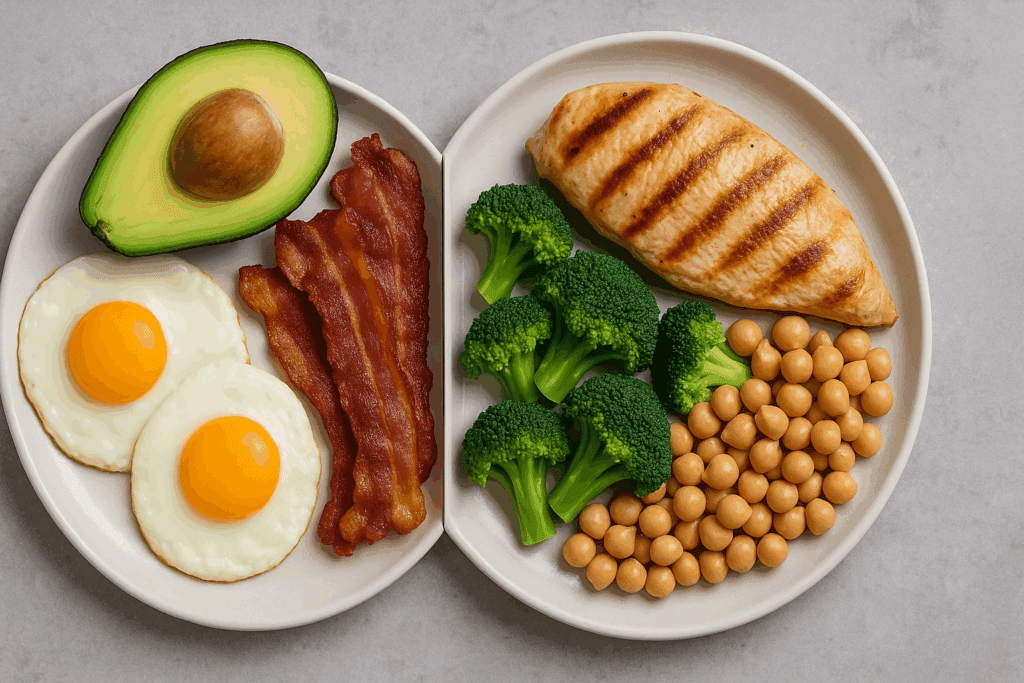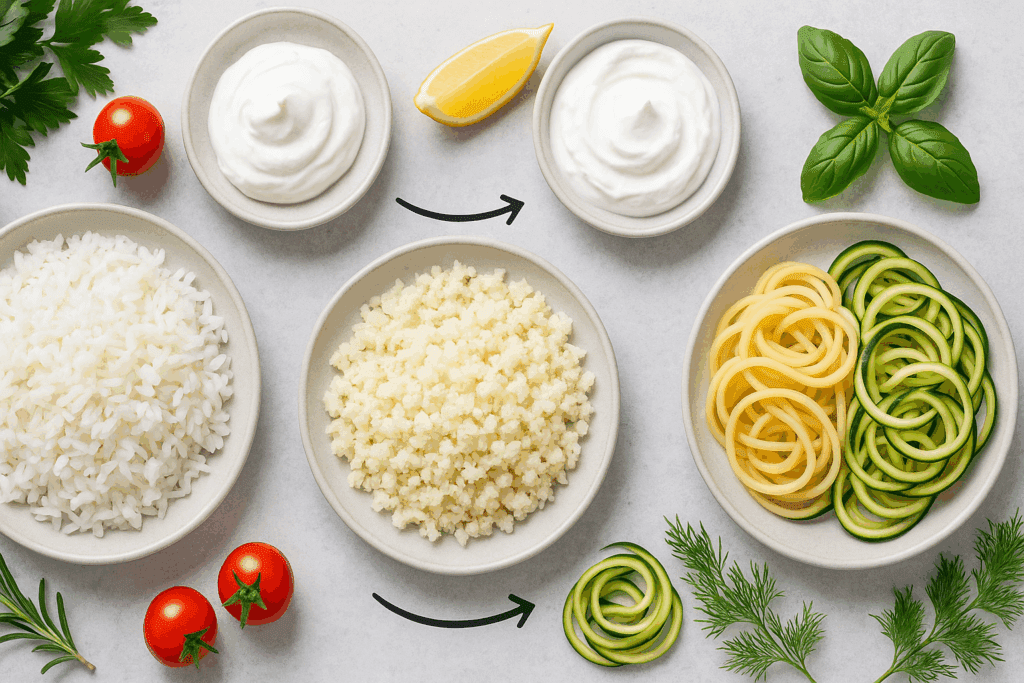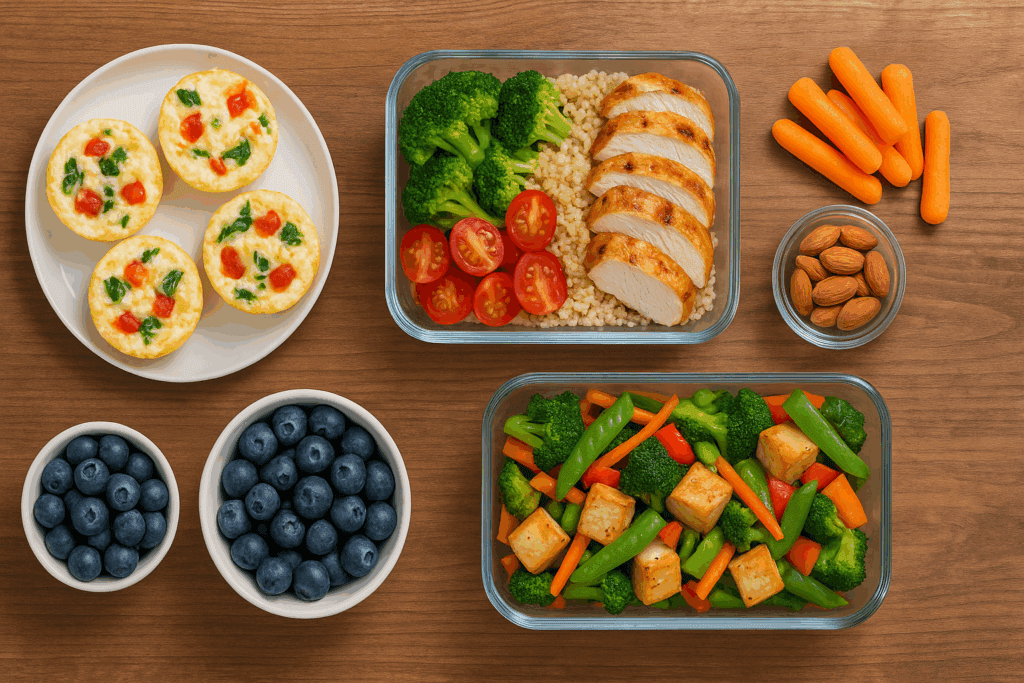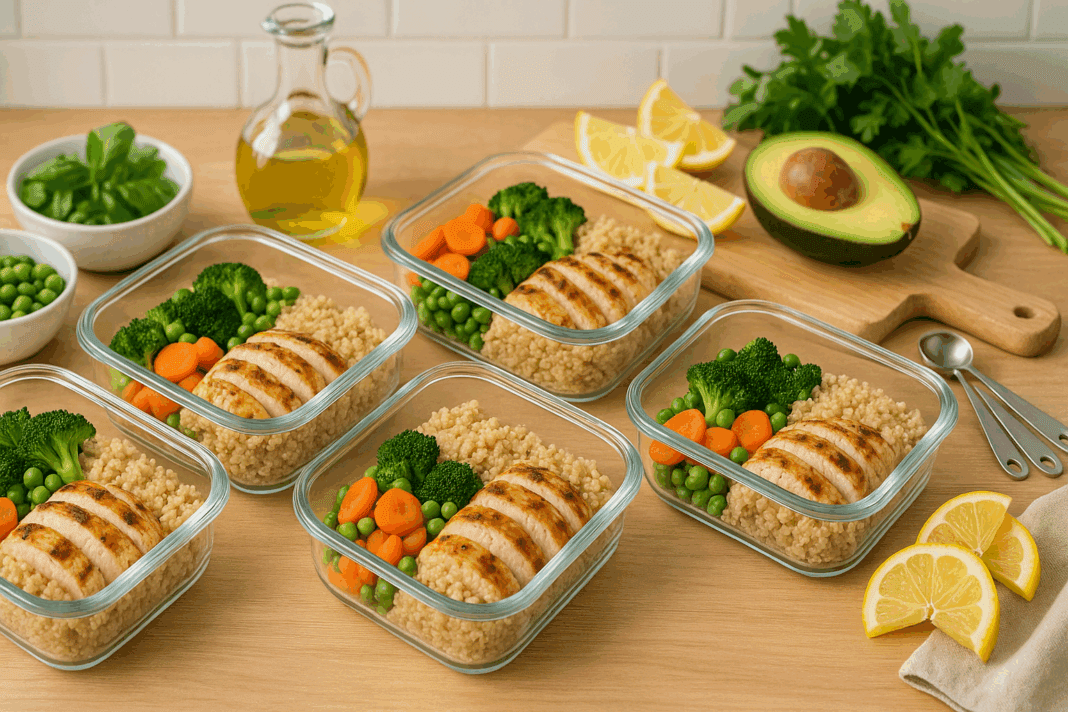Maintaining a balanced diet in today’s fast-paced world often feels like a luxury reserved for those with ample free time and culinary expertise. Yet, the growing popularity of easy low calorie meal prep proves otherwise. With the right knowledge and planning, anyone can integrate healthy, satisfying meals into their schedule, regardless of how chaotic it may be. This article delves deep into the world of low calorie meal prep, offering science-backed guidance and practical advice for creating sustainable, high-protein meal plans that prioritize both flavor and nutrition. Whether you’re aiming to cut fat, boost energy, or support muscle health, mastering low calorie meal prep ideas is a vital step toward your wellness goals.
You may also like: Smart Meal Prep Ideas for a Low Carb Diet: Sustainable Strategies for Weight Loss and Lasting Energy
The Science Behind Low Calorie Meal Prep and High-Protein Strategies
To understand the power of low calorie meal prep, it’s essential to first explore the nutritional science behind it. Reducing caloric intake while maintaining high nutrient density can dramatically improve metabolic function, regulate blood sugar levels, and support weight management. The body requires energy, but excess calories, particularly from processed foods, are stored as fat. Low calorie lunch meal prep empowers individuals to take control of portion sizes and ingredient quality, allowing for precise management of daily caloric intake.
Protein plays a pivotal role in this equation. High-protein diets are proven to promote satiety, which curbs overeating. Moreover, protein helps preserve lean muscle mass during weight loss and aids in metabolic efficiency. This is where low calorie high protein lunch meal prep becomes a cornerstone for health-conscious individuals. Pairing lean proteins such as chicken breast, lentils, and tofu with fiber-rich vegetables results in meals that are not only filling but also nutrient-dense and conducive to fat loss.

Keto vs. Low Carb: Finding the Right Path in Meal Planning
As more people gravitate toward carbohydrate-conscious diets, it’s important to clarify the distinction between the ketogenic diet vs low carb alternatives. Both diets limit carbohydrate intake, but their methodologies and physiological impacts differ significantly. A low carb diet typically includes 50-150 grams of carbohydrates per day, allowing for a flexible approach to carb reduction. In contrast, the keto diet restricts carbs to fewer than 50 grams per day and relies heavily on fats for energy, pushing the body into a state of ketosis.
Understanding this difference is crucial when selecting recipes for low cal meal prep. While is keto a low carb diet? Yes, technically it is, the restrictive nature of keto makes it less flexible for those looking to incorporate a broader range of nutrient-dense foods. For many, low calorie meal prep recipes that reduce but do not eliminate carbs may be a more sustainable and balanced approach. Especially for those not aiming to achieve ketosis, this allows for greater inclusion of fruits, whole grains, and legumes, which provide essential vitamins and minerals.
Balancing Macros: Protein, Carbs, and Fats in Low Calorie Meal Prep Recipes
A successful low fat meal prep strategy isn’t just about cutting calories. It involves achieving the right macronutrient balance that supports metabolic function, hormone regulation, and physical performance. Protein should remain a focal point, especially in low cal meal prep recipes designed for muscle retention and satiety. Carbohydrates, when chosen wisely, serve as important sources of energy and fiber. Fats, though calorie-dense, are essential for absorbing fat-soluble vitamins and maintaining brain health.
Meals like grilled salmon with steamed broccoli and quinoa or lentil chili with avocado slices illustrate how easy low calorie meal prep can support holistic nutrition. These dishes integrate all three macronutrients, maintain a low calorie threshold, and deliver a satisfying taste experience. The key is to minimize added sugars and refined grains while emphasizing whole, minimally processed foods. Such meals not only align with dietary goals but also promote long-term adherence, an essential factor in sustainable health transformation.

Meal Prepping for a Busy Lifestyle: Time-Saving Strategies
Time is often cited as the biggest obstacle to healthy eating. However, adopting efficient meal prep routines can dramatically shift the balance in your favor. The core of successful low calorie lunch meal prep lies in planning and batching. Setting aside a few hours each week to cook in bulk, portion meals, and store them properly can save countless hours of decision-making and cooking during the workweek.
One effective approach involves selecting versatile ingredients that can be mixed and matched across multiple meals. For example, grilled chicken, roasted vegetables, and brown rice can be assembled into burrito bowls, wraps, or salads. Using airtight containers, storing in individual portions, and labeling meals with expiration dates ensures freshness and reduces food waste. Investing in meal prep tools like glass containers, slow cookers, and food processors can also streamline the process and elevate the quality of your dishes.
Debunking the Myth: Is Keto a Good Diet for Everyone?
While the keto diet has gained substantial traction for its role in rapid weight loss and improved insulin sensitivity, it is not a universal solution. A critical question that arises is: is keto a good diet for everyone? The answer depends on an individual’s metabolic health, lifestyle, and medical history. Although keto can be beneficial for people with epilepsy, insulin resistance, or Type 2 diabetes under medical supervision, it can also lead to nutrient deficiencies if not carefully monitored.
Furthermore, those following keto must be vigilant about food quality. Relying heavily on saturated fats and processed meats may undermine long-term health. For individuals seeking a more flexible and nutritionally diverse plan, low calorie meal prep ideas with moderate carbs and lean proteins offer a safer and more adaptable framework. This is especially true for active individuals who require carbohydrates to fuel their physical activities and cognitive performance.

Practical Tips to Keep Low Calorie Meal Prep Ideas Interesting and Sustainable
Sustainability is key when it comes to dietary changes. Eating the same meal repeatedly can lead to palate fatigue and derail progress. Rotating ingredients, experimenting with global cuisines, and trying new spices can make low cal meal prep more enjoyable. Instead of basic grilled chicken, consider Thai-style turkey meatballs, Moroccan lentil stew, or Greek yogurt-marinated grilled tofu. Each of these options aligns with low calorie meal prep while delivering exciting new flavors and textures.
Seasonal produce is another great way to diversify your meals. Incorporating fruits and vegetables that are in season not only enhances flavor but also boosts nutrient intake. Shopping at local farmers markets or participating in community-supported agriculture (CSA) programs can help inspire creativity in the kitchen and support sustainable food systems. Remember, the goal isn’t just to eat less, but to eat better—consistently and joyfully.
Is a Keto Diet Sustainable in the Long Run?
A growing concern among dietitians and health researchers is whether or not the keto diet is truly sustainable. The question is a valid one: is a keto diet sustainable when considering long-term adherence and health? Studies suggest that while initial weight loss may be faster on keto, many individuals struggle to maintain the diet due to its restrictions and social limitations. The exclusion of whole food groups such as fruits, legumes, and whole grains can make the diet monotonous and nutritionally incomplete over time.
In contrast, balanced low calorie meal prep allows for a greater diversity of ingredients, which contributes to better micronutrient intake and dietary satisfaction. Unlike keto, which often demands constant carb monitoring, low calorie lunch meal prep simply encourages mindful eating and portion control. This approach has been shown to be more realistic for long-term lifestyle changes, making it easier for individuals to stick with their health goals.

Smart Substitutions in Low Fat Meal Prep for Better Health Outcomes
One of the most impactful aspects of low cal meal prep recipes is the use of healthy food substitutions. These swaps allow for calorie reduction without sacrificing taste or texture. For instance, Greek yogurt can replace mayonnaise or sour cream in dressings and dips, offering higher protein and fewer calories. Similarly, spiralized zucchini or cauliflower rice can stand in for traditional pasta or grains, significantly reducing carb intake while increasing fiber.
These substitutions support those navigating the decision between a low carb diet and keto diet. While is keto no carbs? Not entirely, but it comes close. For those not aiming for ketosis, these lower-carb alternatives provide balance and flexibility. They also encourage culinary creativity, making healthy eating a more pleasurable and sustainable endeavor. The more enjoyable the meals, the more likely individuals are to maintain their dietary habits over time.
Nutrition-Packed Meal Ideas for Every Part of the Day
Creating variety within your easy low calorie meal prep plan ensures nutritional adequacy and prevents boredom. For breakfast, consider egg-white vegetable muffins or overnight oats made with unsweetened almond milk and chia seeds. These options are quick to prepare, store well, and offer balanced nutrition to start the day. For lunch, low calorie high protein lunch meal prep ideas like grilled chicken quinoa bowls or lentil and roasted veggie wraps provide satisfying mid-day fuel.
Dinner can be equally balanced and flavorful. Try baked cod with sweet potato mash and steamed green beans, or tofu stir-fry with brown rice and cashew sauce. Snacks and desserts should also align with your goals. Think hummus with raw veggies, Greek yogurt with berries, or dark chocolate with a handful of almonds. Each of these examples embodies the principles of low fat meal prep while delivering on taste, nutrition, and convenience.

Frequently Asked Questions: Advanced Insights into Low Calorie Meal Prep
1. How can I stay consistent with low calorie meal prep despite a hectic travel schedule?
Consistency while traveling is one of the most challenging aspects of low cal meal prep. A practicalapproach involves prepping shelf-stable, travel-friendly options such as vacuum-sealed low calorie meal prep recipes that include jerky, protein bars, and dehydrated veggie soups. Additionally, investing in a compact cooler bag can help store prepped meals like low fat meal prep quinoa bowls or overnight oats during transit. Many airports now offer healthy meal stations, allowing travelers to supplement their easy low calorie meal prep routines on the go. Lastly, choosing accommodations with kitchen access empowers travelers to cook or reheat their meals, preserving the continuity of their low calorie lunch meal prep routine.
2. What are some psychological tricks to make low calorie meal prep more enjoyable long-term?
To make low cal meal prep feel less like a chore, associate it with positive emotional cues. Playingmusic, listening to audiobooks, or watching your favorite series while prepping meals can help condition your brain to associate meal prep time with enjoyment. Creating visual meal boards with colorful, diverse low calorie meal prep ideas also fosters excitement. Involving family or friends in the process transforms it into a social activity, enhancing accountability. The more you associate low calorie meal prep with positive emotions and personal empowerment, the more sustainable it becomes as a lifestyle habit.
3. Can low calorie high protein lunch meal prep support muscle gain, or is it strictly for weight loss?
While many associate low calorie meal prep with fat loss, a properly structured low calorie highprotein lunch meal prep plan can absolutely support muscle gain. The key is to maintain a slight caloric surplus and increase protein intake to facilitate muscle repair and growth. Incorporating foods like egg whites, lean turkey, edamame, and protein-fortified pasta into your low cal meal prep recipes ensures optimal amino acid availability. Pairing these meals with resistance training further enhances muscle hypertrophy. Strategic planning, not merely calorie restriction, determines the outcome—making low calorie meal prep a powerful tool for both lean muscle building and fat management.
4. How can I adapt low calorie meal prep ideas to fit cultural cuisines or traditional diets?
Adapting low calorie meal prep to traditional diets allows for personalization while preserving culturalidentity. For example, using riced cauliflower in place of white rice in South Asian dishes or steaming dumplings instead of frying them in East Asian cuisine offers a low cal meal prep alternative without sacrificing flavor. Mediterranean meals benefit from swapping lamb with grilled chicken or legumes while keeping herbs and olive oil intact. Tailoring low calorie meal prep recipes with familiar spices and preparation methods makes them both comforting and effective. This approach enhances dietary adherence by reducing the psychological resistance associated with giving up cultural staples.
5. What role does meal timing play in low calorie lunch meal prep and overall results?
Meal timing can influence energy levels, blood sugar regulation, and satiety. For those practicingintermittent fasting or managing insulin resistance, consuming low calorie high protein lunch meal prep around mid-day can sustain energy without triggering a sugar crash. Spacing meals every 3–4 hours and including fiber-rich vegetables in your low calorie meal prep recipes can help prevent cravings and regulate hunger hormones. Breakfast eaters may benefit from prepping low fat meal prep breakfast burritos or smoothies in advance to stabilize glucose early in the day. Ultimately, consistent timing paired with balanced macronutrients enhances the effectiveness of low calorie meal prep strategies.
6. What are the economic benefits of easy low calorie meal prep for individuals and families?
Easy low calorie meal prep is not only nutritionally advantageous but also cost-effective. Purchasingingredients in bulk, such as grains, legumes, and frozen vegetables, significantly reduces weekly grocery bills. Cooking at home eliminates the markup on restaurant or takeout meals, especially those marketed as “healthy,” which often cost more than homemade low cal meal prep recipes. Families can plan shared meal bases—like roasted veggies or protein patties—to be reassembled in different formats throughout the week. Over time, these practices lead to measurable savings, making low calorie lunch meal prep a financial as well as a health investment.
7. How can technology help optimize low calorie meal prep routines?
Smart kitchen technology has revolutionized low calorie meal prep strategies. Apps like MyFitnessPalor Cronometer allow users to track calories and macros in their low calorie high protein lunch meal prep effortlessly. Meanwhile, smart scales and Wi-Fi-connected pressure cookers automate meal timing and nutrient accuracy. AI-powered meal planning platforms can now suggest personalized low calorie meal prep ideas based on dietary restrictions and goals. These tools reduce decision fatigue and simplify batch cooking. As innovation continues, tech integration will become an indispensable part of easy low calorie meal prep systems.
8. Are there effective ways to make low fat meal prep more satisfying without increasing calories?
Flavor enhancement is the secret to making low fat meal prep enjoyable without caloric overload.Using umami-rich ingredients like mushrooms, nutritional yeast, and fermented foods can amplify flavor naturally. Techniques such as roasting, grilling, and spice layering bring depth to otherwise bland ingredients in low calorie meal prep recipes. Marinating proteins in citrus, vinegar, or herbs before cooking also boosts satisfaction. Additionally, incorporating crunchy or creamy textures—through roasted chickpeas or blended avocado—can elevate low calorie meal prep ideas to gourmet levels without increasing caloric density.
9. How can low calorie meal prep ideas support individuals recovering from metabolic conditions like PCOS or prediabetes?
Low calorie meal prep ideas tailored for metabolic recovery emphasize blood sugar regulation, antiinflammatory ingredients, and portion control. For individuals with PCOS or prediabetes, combining protein, fiber, and healthy fats in every low cal meal prep helps blunt glucose spikes. Using ingredients like cinnamon, flaxseed, and leafy greens can further improve insulin sensitivity. Avoiding ultra-processed foods and refined grains in favor of whole, low glycemic foods supports hormonal balance. In this context, low calorie lunch meal prep becomes a daily intervention tool that enhances metabolic function and long-term health outcomes.
10. What are some underutilized ingredients that enhance the nutritional value of low cal meal prep recipes?
Incorporating lesser-known superfoods can boost the nutritional profile of any low cal meal prep.Mung beans, for instance, are high in protein and fiber yet often overlooked in Western diets. Seaweed varieties such as nori or wakame add iodine and umami without many calories. Teff, a gluten-free grain native to Ethiopia, provides iron, calcium, and prebiotics that enhance gut health. Fresh herbs like dill, parsley, and cilantro bring antioxidant properties while uplifting flavor. Introducing these ingredients into low calorie meal prep recipes not only adds diversity but also supports comprehensive nutritional coverage.

Final Thoughts: Building a Sustainable Future with Smart Meal Prep
Ultimately, successful meal prep is less about rigid dieting and more about creating systems that support your unique lifestyle and health goals. Low calorie meal prep recipes serve as foundational tools in this journey, empowering individuals to eat intentionally without sacrificing satisfaction. Understanding the differences in approaches such as ketogenic diet vs low carb allows for more informed choices based on personal needs, not trends.
As you reflect on your own dietary practices, consider the sustainability of your habits. Ask yourself: is keto a good diet for my long-term well-being? Is keto no carbs sustainable for my energy needs and food preferences? If the answer leans toward flexibility and variety, then easy low calorie meal prep may be your most effective ally. It offers balance, nourishment, and the freedom to enjoy food while staying aligned with your health objectives. With preparation, creativity, and a science-backed approach, you can reclaim control over your plate—and your health.
Further Reading:
Low-Calorie Meal Prep | 18 Tasty Lunch Recipes Under 500 Calories
50 Meal Prep Recipes for Weight Loss | Under 500 Calories
25 Lunches Under 400 Calories That Are Perfect for Meal Prep

